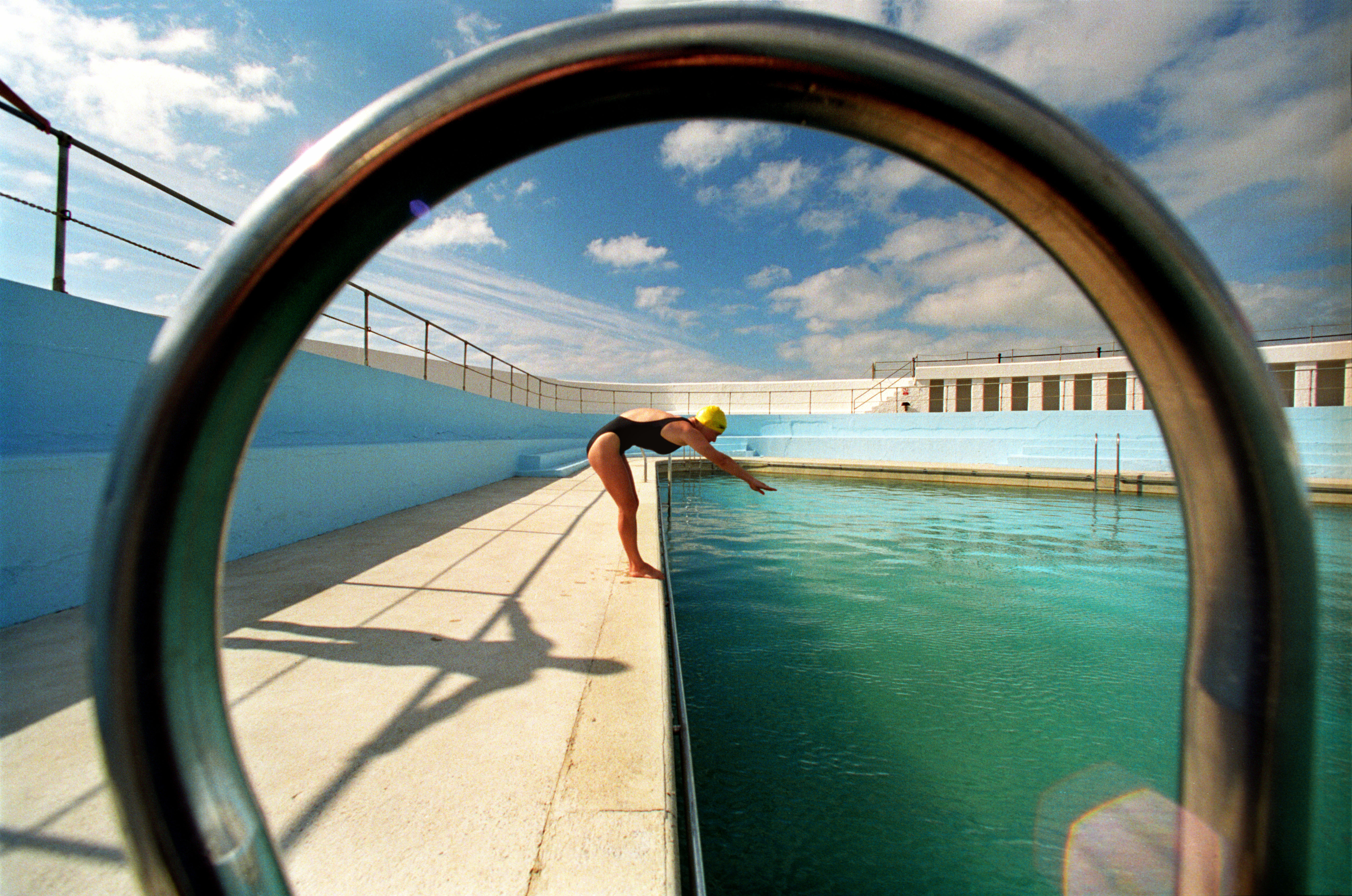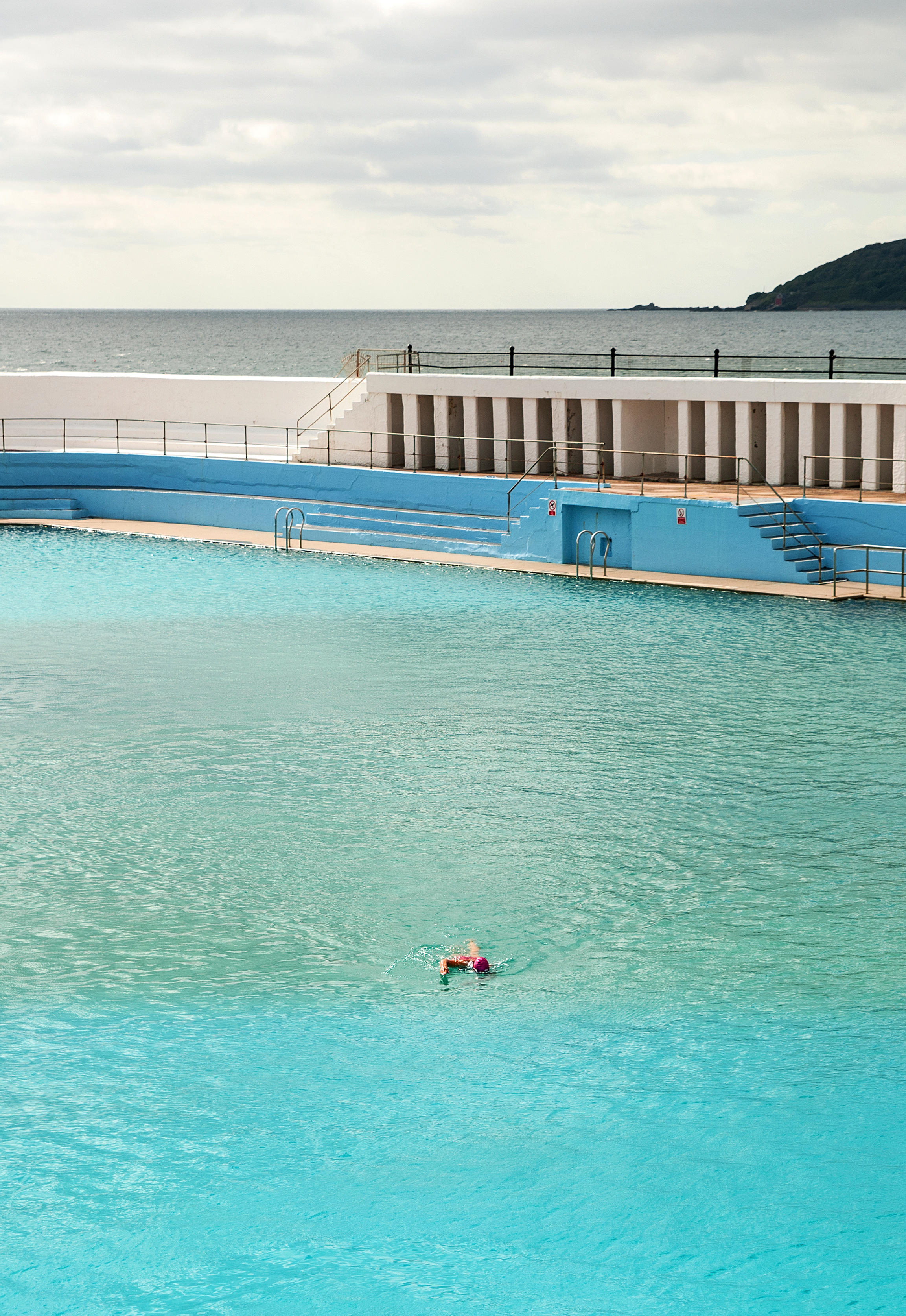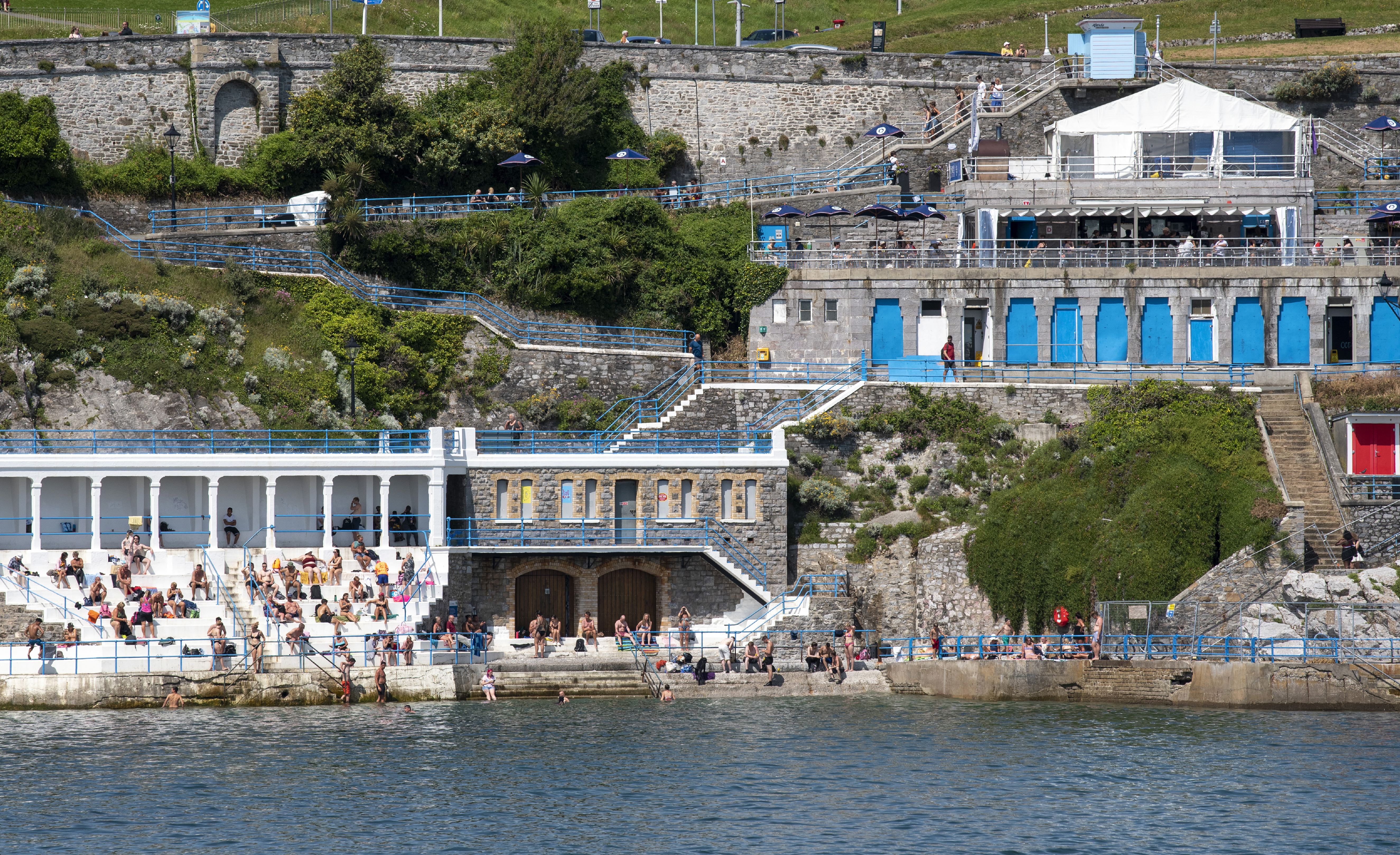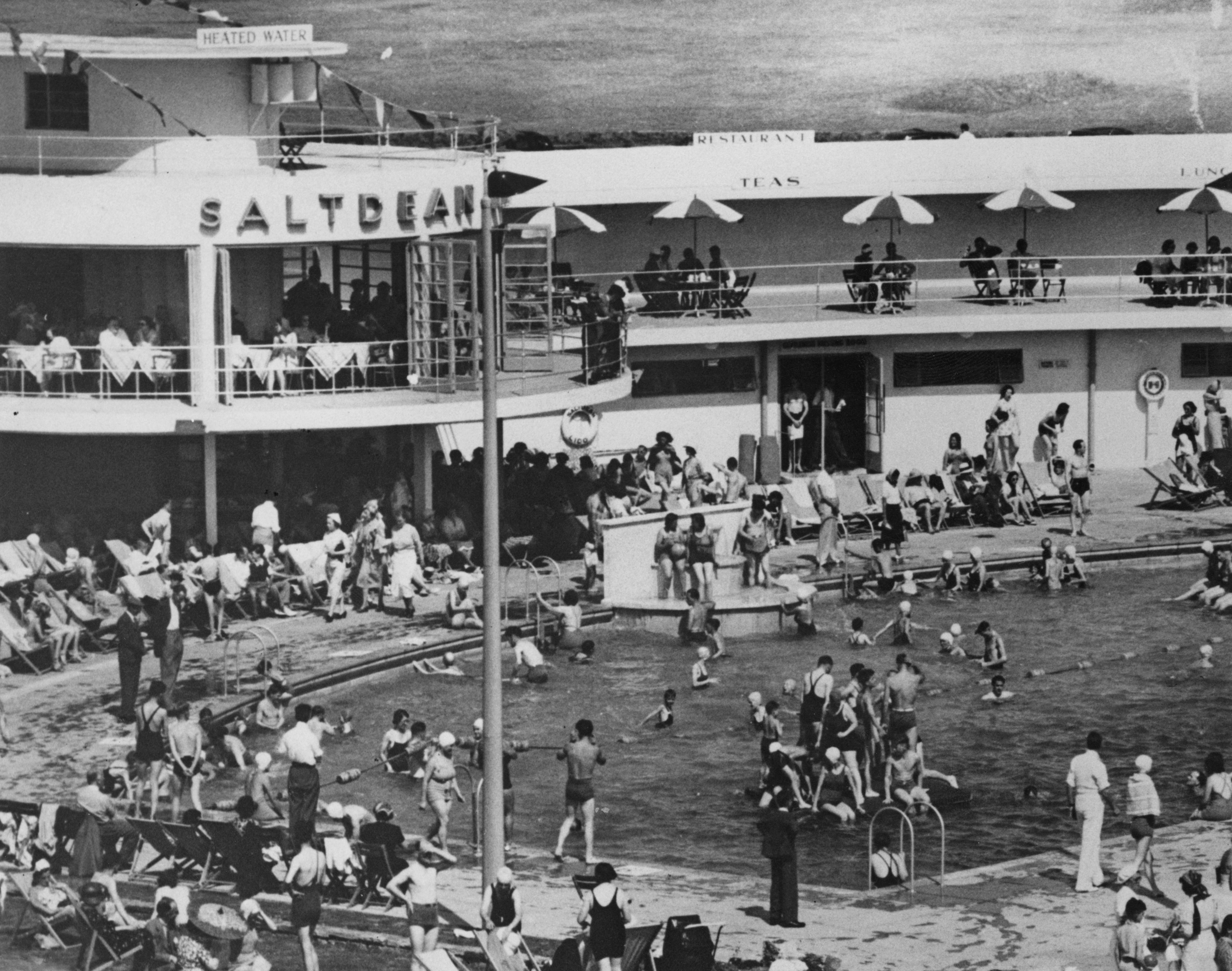Water you're waiting for? Britain's best heritage lidos were built to save swimmers from polluted seas full of potato peelings, oil and coal — and they're still in action today
The seaside lido continues to offer safe swimming for holidaymakers irrespective of the tide, but they're also architectural gems worthy of our admiration.

The UK's only triangular lido is celebrating its 90th anniversary this year, still very much in use. Opened in May 1935, Jubilee Pool at Penzance in Cornwall was named to mark the 25th year of George V’s reign. It was the culmination of a slum clearance and town-improvement programme, the like of which had never been seen in the ancient Cornish borough and the mayor looked forward to it being a ‘source of health, strength and pleasure’ for locals and visitors alike. Swimming saw a huge surge in popularity between the wars as leisure and physical fitness became social and economic priorities. This was the era when sunbathing became fashionable, hiking in the fresh air became a pastime and the Youth Hostels Association was founded. Open-air pools sprang up across the country and every seaside resort worth its salt had to have one.
It may seem counterintuitive that the largest and most innovative pools were built on the coast, but the crowds heading to the seaside were increasing every summer and the tides did not shift their erratic patterns to cater for the demands of holidaymakers. Purpose-built pools generally took their water from the sea, but were accessible for safe swimming throughout the day and, thanks to floodlighting, stayed open into the night, too. Despite the remote location of Penzance, far from urban centres, the arrival of the railways in the 1860s had brought tourists in numbers for the first time. As the town’s natural beach had been shrinking for decades, however, it was hoped that the spectacular new pool would attract visitors and provide an economic boost to the area.
Members of the Penzance Swimming Association and Penzance Water Polo Club were equally keen to have a proper pool, as their annual matches had had to be held in the Floating Dock, where ‘swimmers contend with potato peelings from ships, oil, coal, dust, china clay, if nothing worse, and the dressing accommodation consists of a cargo transit shed’. Historians have routinely undervalued the architectural contribution of borough engineers and architects, but in Capt Frank Latham, Penzance council assuredly had the best man for the job. Latham had been employed as borough engineer and surveyor for 36 years, he knew the place intimately and was also a national expert on marine works and sea defences, having written the book The Construction of Roads, Paths and Sea Defences in 1903 and several articles on the subject. His expertise in employing the natural geography of the shoreline meant that Penzance got its pool for a mere £14,000.

Jubilee Pool features a unique triangular shape and is also the UK's first geothermal lido.
A report on the opening of Jubilee Pool in The Cornishman stated that it was not only a fine piece of engineering, but also a work of art. ‘The monotony of straight walls and right angles — the domain of the compass and ruler — has been entirely avoided. Instead there are graceful curves and pleasing lines — an adaptation of cubism to the terraces and diving platforms which enhances the effect and makes the whole so pleasing to the eye.’
For the pool’s eastern side, Latham made use of the Battery Rocks, an established bathing area that offered natural protection from eastern sea storms. A substantial granite sea wall made up the northern side with the two connected by a new concrete arm. In the middle of this arm was the Cove Rock, which Latham incorporated into the design to act as a central support, cleverly rounding the structure either side so that oncoming waves were broken and swept along the curves, their force expended by the time they reached the beach.
Informed by science and geology as it was, Latham admitted that he got his design inspiration ‘from seeing a gull alight on the sea, and the lines of the pool and its contour suggest this’. The largest sea-water pool in the country, it covers three-quarters of an acre and holds some five million litres, re-filled on the high tide. Contemporaries praised the ‘streamlines’, the concrete bathing boxes or changing rooms and the ‘cubist style’ seen in the interior steps of Jubilee Pool, the whole given a white sheen of snowcrete render. These days, it is more likely to be described as Art Deco, an increasingly catch-all term for buildings of the 1920s and 1930s.

Tineside Lido is a 'magical oasis' built out from the rock base of Plymouth Hoe in 1935. The leisure area, to one side of the pool, looks out over Plymouth Sound.
The same is true for the nearby Tinside Lido at Plymouth, Devon, which has many similarities with Penzance, not least the fact that it opened 90 years ago. Plymouth’s pool also juts out from the rocky shore, making the most of superb views across the Sound and was again entrusted to the borough engineer, a man named John S. Wibberley. He had already designed changing rooms for an existing open-water swimming area next to where the semi-circular pool would be built. The bigger plan was linked to Plymouth’s grant of city status in 1928 and intentions to enhance its tourism potential.
Exquisite houses, the beauty of Nature, and how to get the most from your life, straight to your inbox.
The first major construction work was on the Tinside Colonnade, an overtly Moderne promenade and sun terrace with a cantilevered section supporting Hoe Road as it skirted the clifftops. From this upper level, bathers and spectators made their way through a stair tower with three narrow full-height windows, down to the lower changing rooms and pool. At most open-air pools, the key architectural elements were the extras, the changing spaces, tiers of seating, cafés and diving stages that provided the essential elements of a lido. Janet Smith, the author of Liquid Assets, describes this interwar building type as a ‘magical oasis’, modern, sexy and ‘unlike any form of pleasure park the British public had ever known’.
Stylistically, the look of these places evolved over time and early examples relied more heavily on Classical forms than has generally been acknowledged. The first seaside lido opened in Scarborough’s South Bay, North Yorkshire, in July 1915, its construction permitted during wartime because borough engineer Harry W. Smith had designed it to be part of a new scheme of sea defences. Smith had previously laid out the Italian gardens around the famous Spa Pavilion and continued this theme in the Tuscan colonnades that sheltered 137 tiled dressing boxes above the pool. Grand Edwardian staircases took spectators to a rooftop seating area, as the pumping plant and laundry room were housed in an Italianate block with full-height round-headed arches across its façade.
A year later, the well-to-do west-coast resort of St Annes, Lancashire, opened its newest attraction ‘in the shape of a “Roman” open-air swimming bath’. The Fleetwood Chronicle praised the buildings by Accrington architect Fred Harrison as ‘all of classical and beautiful design, their façades adorned with Ionic pillars and their flat roofs laid out as promenades’. If nearby Blackpool needed a spur, this was it. In 1923, borough engineer Francis Wood and borough architect John Charles Robinson responded with a structure billed as ‘A New Colosseum’, which, at £80,000, cost eight times as much as the St Annes baths. Customers entered under a huge Beaux-Arts dome into a reception and café building that proved swimming pools could also serve as vehicles for displaying civic pride. The D-shaped pool was ringed by a concourse one-third of a mile long and, when full, the oval amphitheatre could accommodate 8,000 spectators and 1,500 swimmers. On the landward side, double-height Doric colonnades curved in front of the changing cubicles.
Southport’s Sea Bathing Lake of 1928 on Merseyside was a less grandiose variation on this model. With a budget of £60,000, its architectural impact was less formal, the glazed dome of the café flanked by a colonnaded pergola. The municipal impetus for these schemes was not merely about providing amenities; building works were also intended to take unemployed men off the street. Without welfare benefits and at a time of economic depression, Southport’s pool gave employment to some 300 local labourers.
Pool construction continued apace and, in August 1931, Reynold’s Newspaper declared that Scotland had ‘suddenly gone bathing mad — community bathing mad’. Queues were reported at recently opened ‘ponds’, as they were known, and at Prestwick in Ayrshire, the new facility was credited with stemming the tide of visitors to English resorts, with the town ‘full to overflowing’. Small wonder then that nearly £100,000 was collectively projected for ponds at Ayr, Saltcoats and Largs in Ayrshire, Rothesay on the Isle of Bute and Millport on the Isle of Cumbrae.
Edinburgh’s seaside resort of Portobello became home to Scotland’s largest lido in 1936. The first in Britain to have a wave machine, it enjoyed the rare privilege of heated water thanks to its location next to a power station. Its most sophisticated architectural element was the cantilevered roof of the west grandstand, but its café can rightly be described as Art Deco, with a stepped roof line emphasised by bands of green tiles either side of a square central clock. A similar design had already appeared at New Brighton’s 1934 Bathing Pool, one of the biggest ever built in Britain, covering 4½ acres at the northern tip of the Wirral Peninsula. Sun worshippers were well-catered for here, as the interior of the café by the vast D-shaped pool was flooded with natural light from a barrel-vaulted ceiling of ‘glasscrete’ bricks.
It was at Morecambe in Lancashire, however, that lido spending peaked in the £130,000 Super Swimming Stadium of 1936, designed by architects Kenneth Cross and Cecil Sutton. The name acknowledged how far these open-air pools had become sites for mass entertainment, the capacity for spectators always far exceeding that for swimmers, thanks to the popularity of galas, diving displays, aquashows and beauty contests.

Saltdean Lido was consciously chosen to give visitors the sensation of 'cruising on land.'

The lido was designed by R. W. H. Jones — who likely didn't have doggie customers at the front of his mind — to echo the nearby De La Warr Pavilion.
Among the nation’s many smaller pools, the most critically acclaimed remains Saltdean Lido just outside Brighton, East Sussex. Designed by R. W. H. Jones for the company creating a brand-new seaside estate on the edge of the South Downs, the pool’s curved northern side is hugged by a superb Modernist building with clear echoes of the ground-breaking De La Warr Pavilion at nearby Bexhill-on-Sea. Its two wings of ground-floor changing rooms are topped with sun terraces flanking a first-floor café that curves out to greet the water supported on slim concrete piers. After years of community campaigning, the pool and its glorious glazed buildings have now been fully restored.
It proved hard for the behemoths of the genre to survive, as holidaymakers sought foreign sunshine and indoor leisure centres promised more comfortable swimming in temperature-controlled environments. Even listing could not save the extraordinarily sculptural concrete diving stage at Weston-super-Mare’s 1937 pool, which was deemed unsafe and out of fashion in 1982.
The recent return to favour of cold-water swimming means that, a century on from their original heyday, we now regret the passing of these interwar lidos and, where they remain in derelict form, locals are seeking to bring them back into use. Work is underway on restoring the buildings at Tarlair Lido in Aberdeenshire and groups are fund-raising to renew both Grange-over-Sands Lido on the north-west coast in Cumbria and Tynemouth Lido on the north-east in Tyne and Wear. A new network called Future Lidos has been created to support these campaigns in the hope that more open-air seaside pools will join Penzance, Plymouth and Saltdean in having a viable future.
This feature originally appeared in the July 2, 2025, issue of Country Life. Click here for more information on how to subscribe